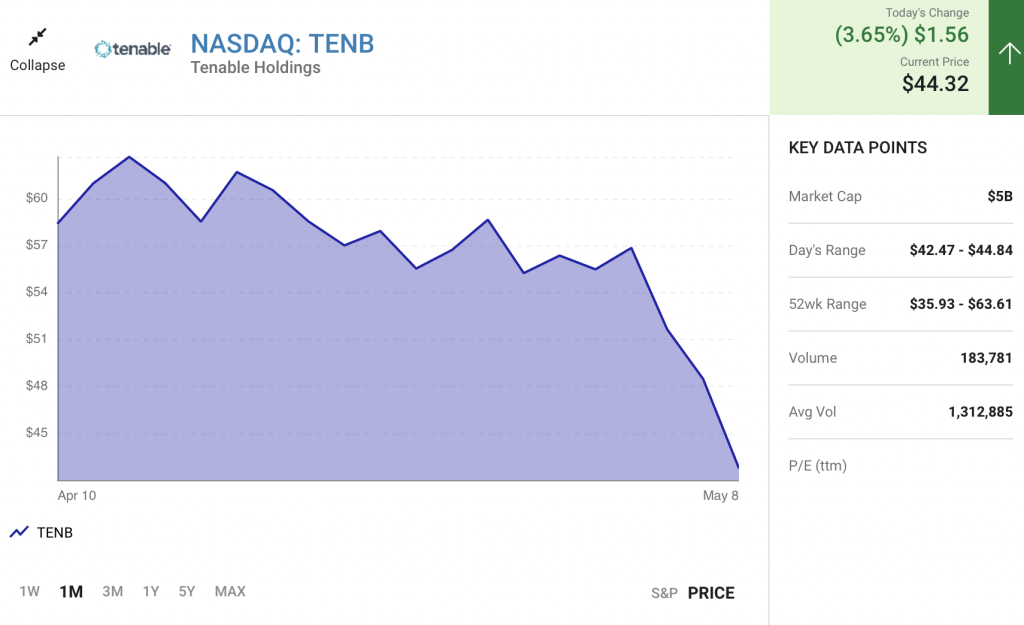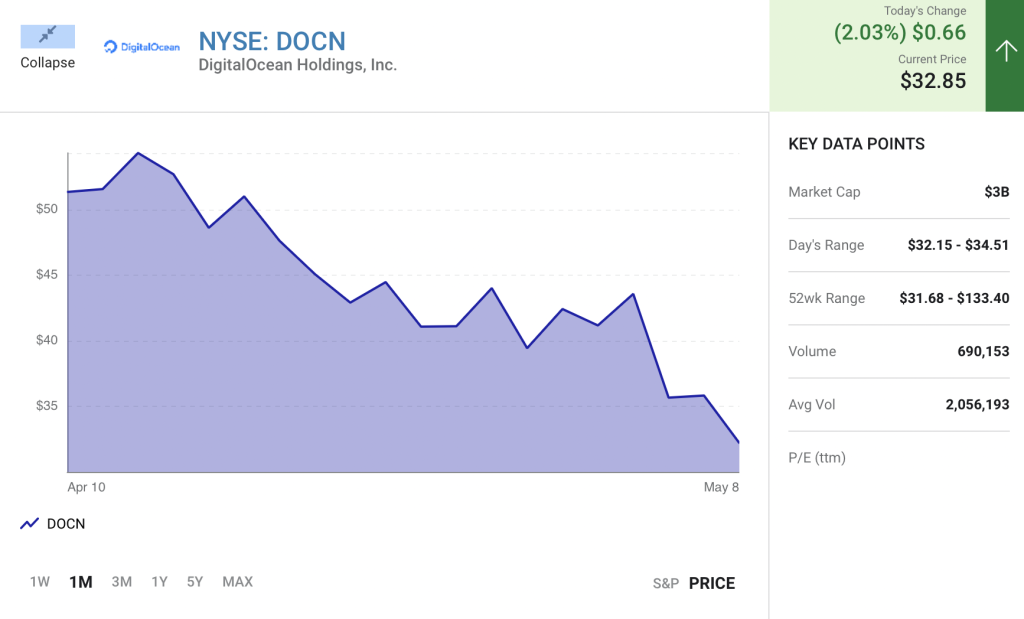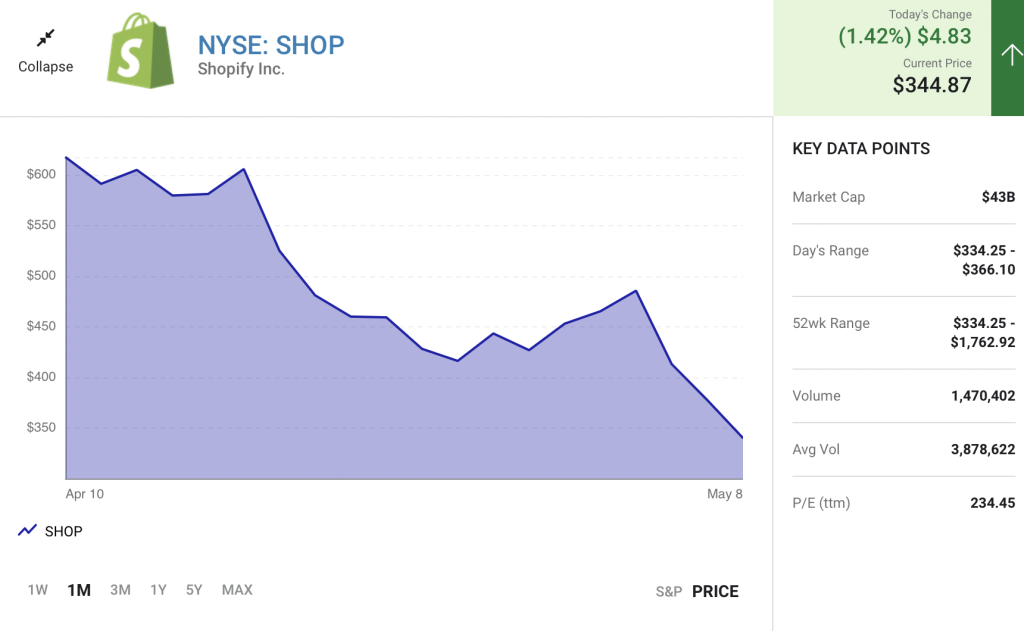When the stock market is volatile, a long-term approach can smooth out the rocky returns.
It’s official: The Nasdaq-100 technology index is in a bear market, having lost 24% of its value from its all-time high set in November 2021. Investors have grappled with rising interest rates and geopolitical tensions in Europe, which have weighed on sentiment, bringing the lofty valuations of high-flying tech stocks back down to earth.
In times like these, it’s useful to take an extremely long-term view when it comes to investing, and focus on companies operating within high-growth sectors. Three Motley Fool contributors think Tenable Holdings(TENB 3.65%), DigitalOcean Holdings (DOCN 2.03%), and Shopify (SHOP 1.42%) fit the bill. Here’s why now is a great time to buy all three stocks, which could form part of your portfolio forever.
A threat detection specialist
Anthony Di Pizio (Tenable): Until a week ago, shares of cybersecurity powerhouse Tenable were trading in the green for the year. It was one of just a few stocks delivering a positive return for 2022 in the face of a collapsing broader market, but even with its current year-to-date decline of 9%, it’s still outperforming the Nasdaq 100 index, which is down by more than double that amount.
The outperformance is driven by a growing need for advanced cybersecurity tools among large corporations as the threat landscape continues to evolve. Tenable is ranked No. 1 across multiple categories including coverage, accuracy, and adoption. Its Nessus platform protects against over 69,000 common vulnerabilities and exposures, which is the highest number in the industry, and it does so with the lowest rate of false positives, according to the company.

Tenable’s Nessus is deployed within over 30,000 organizations and has been downloaded over 2 million times. Its customizable nature makes it perfect for businesses of all sizes, but the company is observing the fastest growth among its customers who spend $100,000 or more each year. As of the first quarter of 2022 Tenable had 1,112 of those customers, and between 2016 and 2021 it added them at a rate of 54% per year. It helped the company grow its revenue by 34% annually over the same period, to $554 million in 2021.
The growth looks set to continue in 2022, albeit at a slowing pace given the uncertain economic environment. Tenable expects to deliver $676 million in sales this year, a 22% year-over-year jump.
But the most lucrative gains could be realized over the long term. By 2030, estimates suggest the cybersecurity industry could be worth over half a trillion dollars annually. In a survey conducted by global consulting firm PricewaterhouseCoopers, a group of CEOs indicated cybersecurity risks were the greatest threat to their respective businesses over the next 12 months, and as companies continue to migrate more of their operations online, that trend is likely only going in one direction.
It makes a great case for adding Tenable to any investment portfolio for the long run.
Serving an underserved market
Jamie Louko (DigitalOcean): DigitalOcean is hyper-focused on providing cloud infrastructure to small and medium-sized businesses (SMBs). Developing cloud infrastructure can be difficult for businesses, and there are many SMBs out there that aren’t cloud experts. The three big cloud providers — Amazon‘s AWS, Microsoft‘s Azure, and Alphabet‘s Google Cloud — haven’t created a simple solution for SMBs, which has made it hard for this cohort to scale in the cloud.
DigitalOcean realized this problem and created a cloud solution specifically for non-experts. This includes basic infrastructure products like droplets, as well as a community of expert developers and a library of content to help SMBs learn more about the cloud and how to operate on it.

The company’s fixation on the SMB space has paid off. DigitalOcean has over 623,000 customers, and revenue reached $127 million in Q1. Over the same period, the company’s average revenue per user jumped 28% year over year to nearly $69, which shows that these customers are increasing their spending as they learn more about the cloud.
This niche market might not seem like a lucrative space, but it could be huge. DigitalOcean sees its total addressable market reaching $145 billion by 2025. Considering the company has expectations of $566 million in full-year 2022 revenue, there is huge potential for the company to expand.
The company lost roughly $18 million in Q1, but it generated $5 million in free cash flow over the same period and has over $1.5 billion in cash and securities on the balance sheet to subsidize these losses. At just 6.6 times forward sales, DigitalOcean looks like a bargain right now.
Other cloud competitors have yet to create a product tailored specifically for SMBs, which has allowed DigitalOcean to gain a brand reputation in the space. This has evolved to the point where 9 million unique visitors went to the company’s website in Q1. This growing brand will likely allow DigitalOcean to continue to capitalize on this large market going forward, which is why this stock might be one to hold for the long term.
On a mission to make commerce better
Trevor Jennewine (Shopify): Rising prices are putting pressure on consumer spending, and many e-commerce companies are feeling the impact. Shopify has seen its share price fall more 20% since releasing its first-quarter report last week. But investors who sold the stock are missing the big picture.
Shopify has become the retail operating system for over 2 million businesses. Its commerce software helps merchants manage sales across physical and digital storefronts, integrating seamlessly with branded websites, social media, and online marketplaces. Shopify also provides value-added services like payment processing, shipping, and financing. In short, the company makes it easier to start and run an omnichannel business. That value proposition has helped Shopify become the second-largest player in the U.S. e-commerce industry (behind Amazon).

Revenue rose 22% to $1.2 billion in the first quarter, and the company generated negative free cash flow of $70 million. While shareholders were hoping for better results, Shopify still gained market share in the U.S. commerce industry, both online and offline, and the company remains well positioned for future growth.
Management is working to expand its geographic footprint. Its point-of-sale hardware is now available in 11 different geographies, including three added in the first quarter. The company also completed its rollout of Shopify Markets, a cross-border commerce service that helps merchants adapt their digital storefronts to international markets. That means localizing details like language, currency, and payment options.
Perhaps more exciting, Shopify plans to acquire Deliverr for $2.1 billion, a move that should accelerate its ambitions to operate a fulfillment network. Deliverr already provides fulfillment and logistics services to sellers on platforms like Amazon and Etsy, and its ecosystem of partner warehouses, carriers, and last-mile providers will enable Shopify merchants to offer two-day or next-day delivery to buyers across the continental U.S.
In the short term, Shopify’s growth strategy will likely put pressure on margins, but in the long run, it promises to further differentiate the company. That’s why this disruptive growth stock is a buy.







